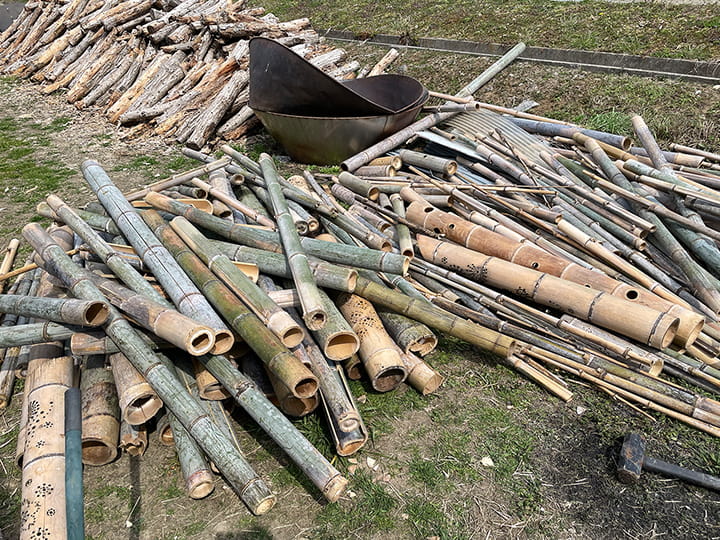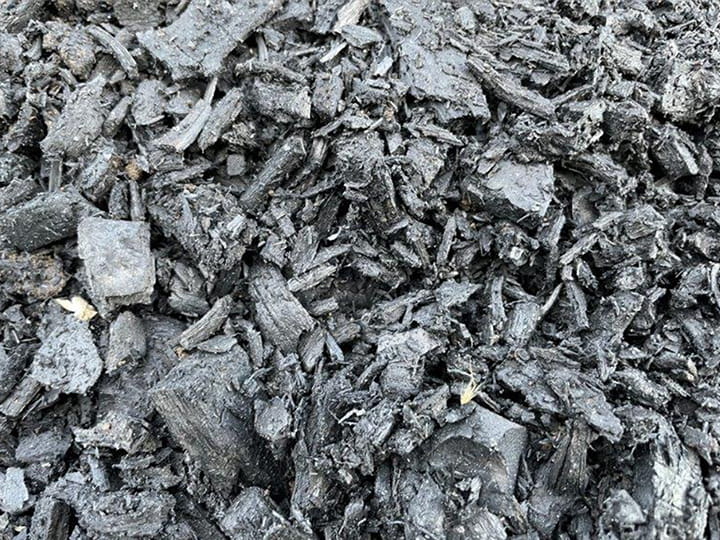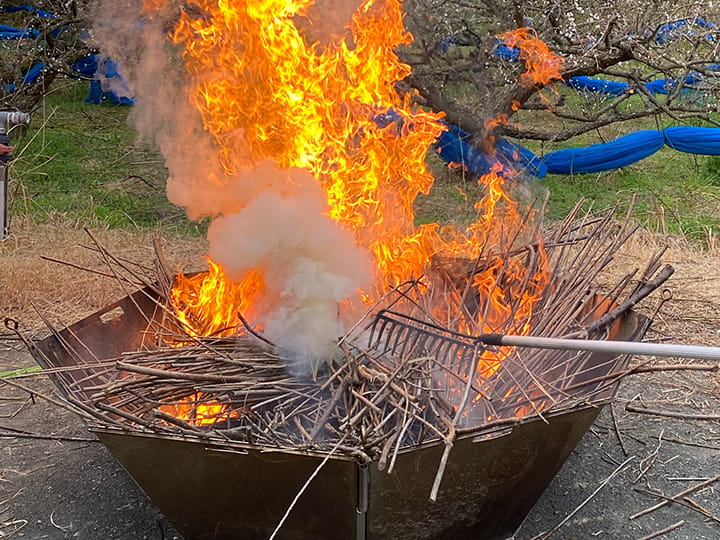On biochar carbon credits
How does biomass become charcoal?
Biomass, such as bamboo or wood, is composed of carbon, hydrogen, oxygen, etc. When baked in a carbonizing furnace, the biomass is pyrolyzed and the hydrogen and oxygen contained within it are returned to the atmosphere, leaving the carbon as a solid. This mass of carbon is charcoal.
The carbonization process of bamboo
The carbonization process of pruned branches of plum trees
Why biochar or charcoal can be counted towards carbon credit?
Biomass-derived carbon originates from the carbon dioxide that plants absorb from the atmosphere. Therefore, the production of charcoal can be viewed as a process that effectively removes carbon dioxide from the atmosphere. Charcoal is highly resistant to decomposition, and charcoal found at prehistoric sites, such as the Kamikuroiwa site in Ehime Prefecture, has been determined to be over ten thousand years old. The fact that charcoal can sequester carbon dioxide from the atmosphere for such an extended period indicates that it has a high environmental value from the perspective of combating global warming and could be an effective method of carbon dioxide removal.
Regarding the duration of charcoal's persistence, discussions continue about its preservation environment. However, applying charcoal to soil is considered a simple, inexpensive, and long-term method of carbon removal and sequestration. Consequently, in Japan and other countries, the use of charcoal in soil and similar applications is recognized for its environmental value in removing carbon dioxide and has been converted into carbon credits.






